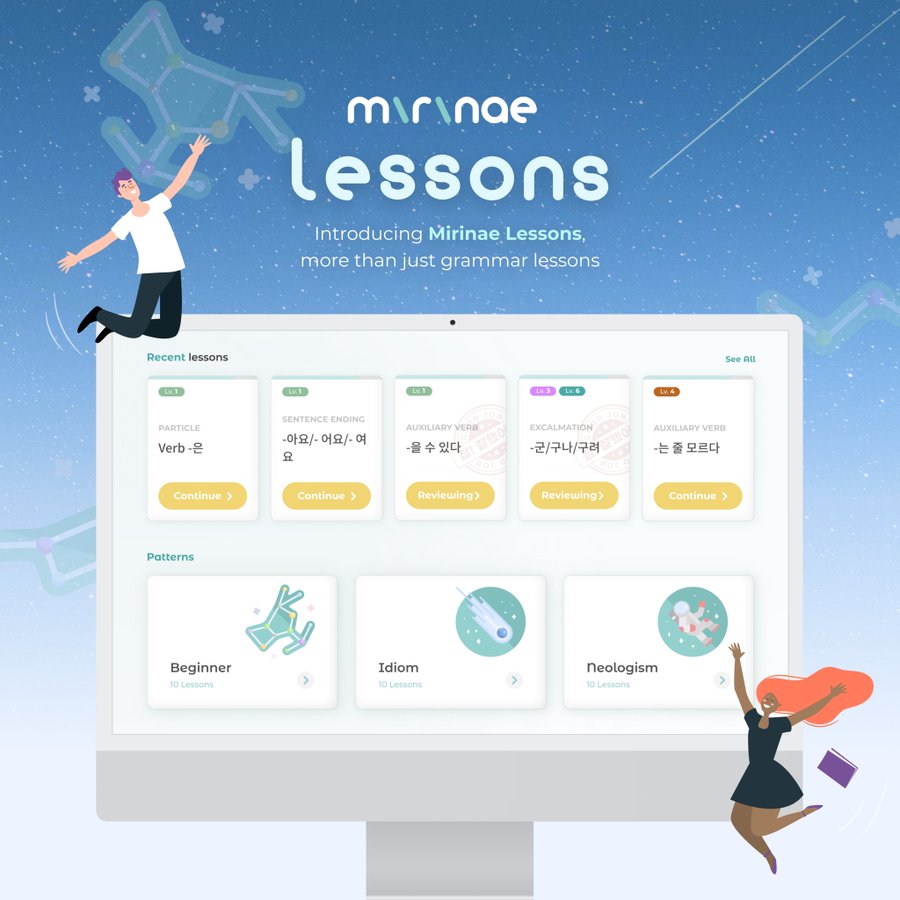Here's a link to my log for 2022: For 2022, a Zen approach to language learning (Asian Languages, but mainly Korean)
I still continue with the Zen mindset, so I wanted to keep the title of last year's log, but start a new log not attached to a specific year. Thus, I’m opening this new log.
First, some updates for what I said in my previous log:
AndyMeg wrote:A few weeks ago I started to teach basic Korean to an acquaintance's daughter and that kind of put me back on the Korean learning track.
I’ve continued teaching her. As she is still a child, I’ve been using the free ebooks from the series “Coreano para la Comunidad Coreana Hispanohablante” as my main resource, but I’ve been adapting the material to best fit her way of learning, keeping in mind her age (9 years old).
A few weeks later I also got a second student. She is a young adult and she was looking for a tutor in Korean as she was taking a beginner’s Korean class as a complementary subject for her undergraduate degree, but the Korean teacher was going too fast for her (covering 2 full units of the first book of the Cyber Korean series from the King Sejong Institute per session. Each session being 2 and a half hours long). The first book of the series covers about 2 or 3 grammar points per unit and doesn’t have a dedicated section for learning Hangul (the Korean alphabet), so she was struggling with understanding the material of the units because she hadn’t had enough time to master Hangul first. What I understood from what she told me, was that the teacher did explain the basics of Hangul during the first 20 minutes or so of their first class, but after that he moved right into the book’s units and never looked back.
I tutored her for the rest of the semester and she passed the class. After that, she told me she really liked my way of teaching her and would like to continue learning Korean with me. She told me that she would like to start back from scratch, so she could have a more solid foundation in the language (which I couldn’t fully provide for her during our tutoring lessons, as we had a curriculum to catch up to, so that she could pass the final exam at the end of the semester and we were short on time because they were already one third into the book’s content when we started our tutoring sessions). I did provide her with a solid foundation in Hangul and pronunciation, though.
After she passed the exam and finished her Korean course at university we started our new, more relaxed, Korean classes near the end of last year, but then we took a break during December and January and came back around the beginning of February this year.
Having two students in different developmental stages (one being a child and the other a young adult) made me have to use different resources and implement different approaches with each one. And I really enjoy using my knowledge on language learning in general, to help my students have a joyful learning experience at the same time they develop actual language skills. This whole experience has made me think that in the future I would like to make language teaching/tutorship a more prominent part of my life. But for now I’m focusing on my two current students, and on improving my own Korean, as I want to have a more solid Korean level so I can be a better teacher.
As my mindset is still that of a Zen approach, I’ll talk about my current Korean related activities:
- First, just preparing my classes and teaching the language has helped me fill in some blank spots I had and also improve in some areas as well (like my pronunciation, which wasn’t bad to begin with; but got a lot better after teaching my students).
- Near the end of last year I bought a Samsung Galaxy Tab S (a series that comes with a pen) and it has increased my productivity exponentially (not only on the language learning/teaching front, but also in other areas of my life). One of my favorite features from the tablet is that I can point the pen to a text in another language and then a pop-up window powered by Google translate opens up and gives me an instant translation to any language I choose.
- I’ve been watching the animated series “Voltron: Legendary Defender” with Spanish dubs and Korean subs.
- In my log from last year I talked about an app called “Mirinae”. I used it for a while, but then got busy with giving Korean classes and other stuff in my life and stopped using it.
Early this year I was planning on using Mirinae again, but it had gotten out of beta and was no longer a free app. At that time I had to prioritize other things, so I didn’t subscribe to it. But last month they were giving a 50% discount for the annual subscription and I paid for it.
Now I started to read Korean Webtoons again using the “Google translate” pop-up function from my tablet whenever I need it; and if I need more info, I copy-paste the text and put it into Mirinae for a more exhaustive analysis and deeper explanations. I’m enjoying this activity a lot!
By the way, if you don’t know about Mirinae, here’s is a short video about it:
Mirinae also has Korean grammar lessons, but for now the lessons are mostly for beginner's level:
Mirinae Lessons

As for Japanese...
I bought more complements for the Kanji Study Android app (The KLC Graded Reading Sets and both the Essentials edition and the Expert edition of the Outlier Kanji dictionary) and I’m excited about starting to use them soon.
I also found some graded podcasts with Japanese subs, and I plan to start listening/reading to the whole series starting from the most basic level as a way to refresh my Japanese (because I haven’t been using it much lately).
Here a video from the Begginer's podcast playlist:
Here a more advanced podcast from the same author:


